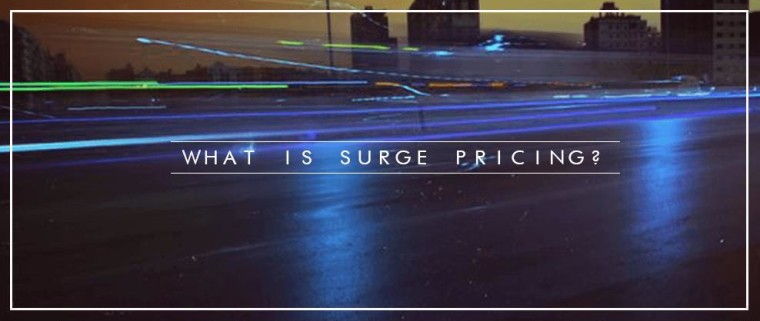
Uber is having a bit of a rough year in terms of maintaining a positive image. Despite its troublesome CEO Travis Kalanick resigning back in June, rising ride costs and lawsuits have furthered the negative perception of Uber. If raised prices are a point of contention for you with Uber, you're not going to be fond of what comes next.
In a study done by the University of Warwick, a team of researchers found that Uber drivers are making coordinated efforts to push the ridesharing system into "surge pricing", forcing riders to pay higher prices during fake busy times. The study was conducted by Warwick Business School's Mareike Möhlmann and Ola Henfridsson, as well as New York University's Lior Zalmanson. The team interviewed drivers in New York and London in addition to combing through 1,012 blogs on UberPeople.net - a forum for Uber drivers. The results of their investigation found plenty of evidence of drivers coordinating mass log-offs and ride request avoidance to trigger surge pricing events.

Surge pricing is the inflation of the cost of a ride during busy request times. Uber's algorithm that determines surge pricing assesses driver availability for a specific region and weighs available cars currently logged in against incoming ride requests. If the balance between requests and available drivers tilts too far toward requests, surge pricing kicks in and will force riders to accept higher ride prices if they're needing a ride during the surge event. This could be a small rate hike or a significant one, depending on how many requests come in during a time when few drivers are available.
It may seem unfair, but Uber drivers are not employees - they are contractors who are free to go online and offline as they please. That fact alone makes it hard for Uber to enforce policies that regular employees would have to abide by. The flexibility given to drivers is a big reason why many people work part-time/full-time on the system to begin with. As drivers spend more time learning the ins-and-outs of their specific market, they're more keen to maximize their income potential, and many of those experienced drivers are taking advantage of the automated system.

Warwick's published study also digs into the struggling UberPOOL service, which bunches riders together for a cheaper ride when they're all going to a similar destination. According to Warwick's data, many drivers avoid UberPOOL requests like the plague because, even though more passengers are being carried, drivers barely make any more money for their time, and a driver's earnings mostly come by distance traveled when a rider is in the car. After several POOL request refusals, Uber's system is less likely to send an UberPOOL request to that driver, allowing them to focus on catching better-paying jobs.
NYU's Dr. Lio Zalmanson wrapped up the study's published report with following:
“The drivers have the feeling of working for a system rather than a company, and have little, if any interaction with an actual Uber employee."
“This creates tension and resentment, especially when drivers can only email to resolve problems. Uber’s strategy is not at all transparent, drivers do not know how decisions are made or even how jobs are allocated and this creates negative feelings towards the company".
"So they fight back and have found ways to use the system to their advantage.”
Uber absolutely has a dilemma on its hands and it's not going away. Drivers are able to game an automated system without any backlash because they're not employees and are not required to fulfill any sort of requirements while online. Drivers can work the system in many ways, and sometimes that means that customers are coming second. The freedoms that come with being an Uber driver can wreak havoc on Uber's automated system and make rides cost more to users caught in a premeditated surge pricing trigger event.
Uber has been aggressively resistant to making drivers direct employees but it is becoming more and more apparent that the company may need to seriously consider moving in that direction if its rideshare company is to find stability going forward.
Source: Warwick University Images: Alavia, TheRideShareGuy

















23 Comments - Add comment